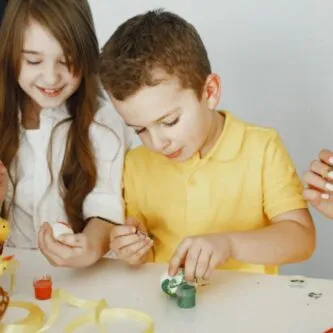
As much as possible, parents want to make their home conducive for the whole family. They do everything to provide children with physical safety, meet their daily necessities, and allow them to stay in a comfortable environment. However, it won’t be uncommon for parents to miss out on the emotional aspect. Sure, the house has everything that meets the children’s needs — but if there’s no conscious effort to foster healthy emotional relationships, then parents should rethink their efforts and begin to understand how to create an emotionally healthy home for the child.
In every home, the chance to talk about emotions and feelings is essential to the development of the child. Fortunately, it’s not too late for you to start. By making it a habit to give attention to your children, practice active listening, and more, it’s certainly possible. Read on to learn more.
Offer Time and Attention to Your Child
As busy as you are with work, it’s important that you try to devote a few moments to just simply paying attention to your child. If you persistently fail to meet their needs when it comes to attention, you can unknowingly let your child grow up with a reactive attachment disorder. You may find them withdrawing more than usual or even failing to turn to you even when you do try to provide emotional support.
This is why you should make sure that you and your child interact for at least a short period during the day. For example, when they’re trying to tell you a story, turn a listening ear towards them. Don’t be dismissive by telling them that you’re busy or that you don’t have time to listen. Aside from that, make sure that you respond to any bids for connection, such as when they want to spend time with you, play board games, sports, or what have you. Be active in engaging in your child’s interests as well.
Practice Active Listening
As the name suggests, active listening involves a conscious effort to really hear what your child is telling you. It can be difficult to master at first, but all it takes is the consistent practice of a few key techniques.
For example, when your child is talking to you about anything at all, try to focus all of your concentration on their words. Physical cues such as making eye contact and leveling your body to their height provide them with encouragement. Don’t listen just to talk — instead, hear out what they’re saying and show them that you understand by asking questions or telling them that you understand.
Set House Rules
An emotionally healthy environment doesn’t necessarily mean that everyone in your home can act as they please. Some behaviors simply cannot be tolerated, which is why you need to be able to set clear rules when it comes to displaying emotions.
Let’s say for example that your child wasn’t allowed to use the tablet to play games before bedtime. If you haven’t set this rule beforehand, it can be common for your child to start yelling or begin throwing tantrums.
When they show this behavior, explain to your child why you won’t tolerate any yelling. You can tell them that yelling is not respectful, or that being calm is much more beneficial.
Tantrums are usually a sign of frustration that children show when they don’t feel like they have control. As much as possible, don’t scold them. Instead, try offering them things that can distract them from tantrum-throwing or acting out. It may also be useful to reward them for positive behavior moving forward — such as giving praise or showing affection.
Talk About Difficult Topics
Finally, good emotional health may also depend on a parent’s capacity to bring up and address difficult conversations with their children. As mentioned before, you don’t want to be dismissive about anything your child shares with you — the same goes when they want to bring up discussions on mental health, depression, anxiety, or any subject.
When you feel like your child wants to tell you something, devote a time and space where you can healthily discuss emotions and feelings. This can be done by choosing a quiet place at the home just to drop everything you’re doing and start listening to them.
When your child sees that you’re there for them and that you’re someone they can talk to whenever they have problems, they’ll be less hesitant to approach you. More than that, they may also gain more trust in you, especially when they need someone to confide in.
Key Takeaway
In this article, we’ve covered just some of the things that you can do to create an emotionally healthy home environment for your child. You have to understand that emotional health isn’t developed in just one day. Instead, you really need to dedicate yourself to listening to your child, giving them the time and attention they need, setting house rules, and talking about difficult conversations.
Fostering trust and healthy emotional bonds with your child may be essential for their development. The more consistently you practice all of the techniques above, the more you can improve your relationship with your child even at their young age.






-logo.png)



